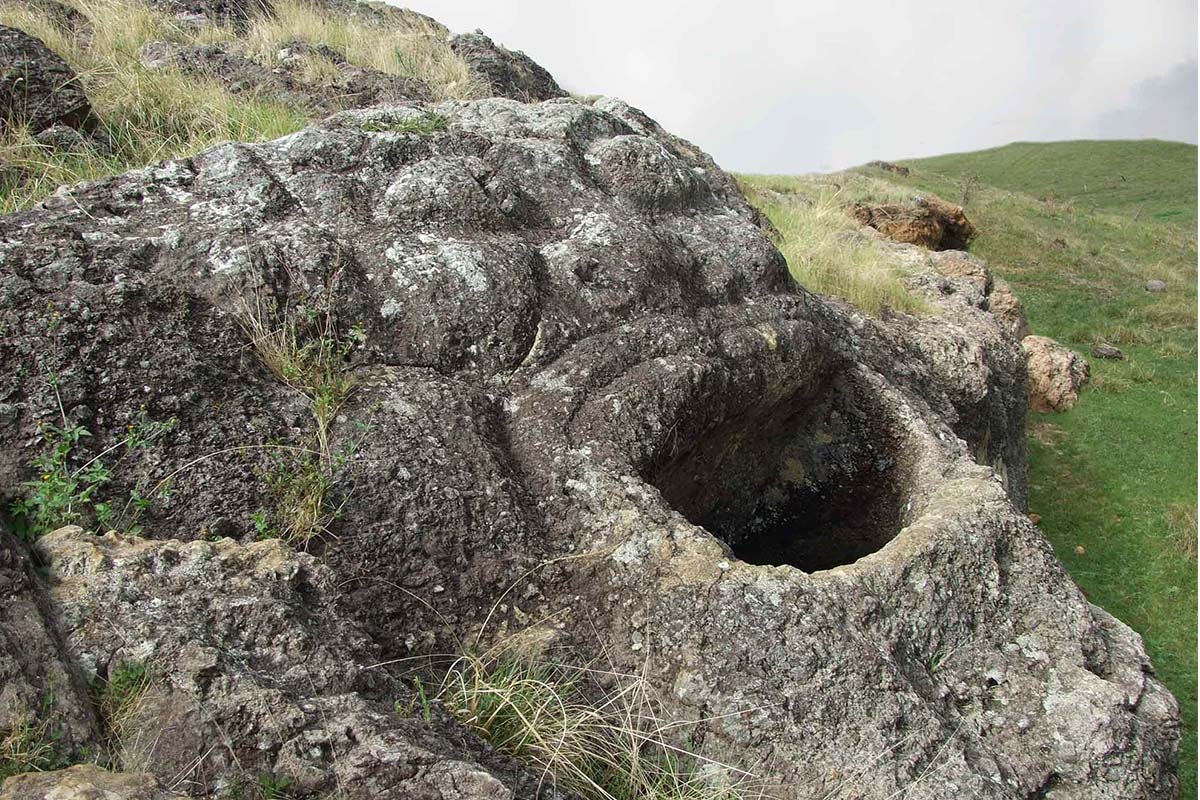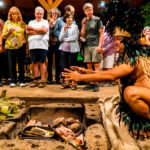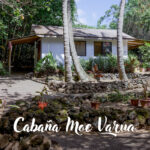The Cosmovision of Rapa Nui
Throughout time, the origins of the universe and of humanity have been mysteries that a great variety of religions have tried to explain. The ancient Polynesians developed cosmological legends of origin which were called “Songs of Creation”. Similar myths of origin and a diversity of gods are shared throughout the many islands, including Rapa Nui, although each culture has some different local interpretations.
In their book “When the Universe Was an Island”, Alexandra and Edmundo Edwards describe a Polynesian concept of origin of the universe as a process of evolution from the dark and intangible to a tangible state full of light. These pre-existing elements progressively generated the gods and the cosmos. In the specific case of the Rapa Nui Song of Creation, only 48 stanzas have been saved through folklore, making it highly incomplete when compared with other cosmological tales, such as the Hawai’ian which has more than five thousand stanzas. Even so, the folklore which remains today, dealing with the cult of the ancestors and the belief in guardian spirits called Aku Aku, allow us to clarify some part of the ancient cosmovision.
The authors specify that in the different Songs of Creation throughout Polynesia the universe is considered as a sphere divided into two opposing parts: the Ao, a sublime luminosity located above the skies where the gods of creation and other supernatural beings reside and generate the powers of light, love and peace; and the Po, the obscurity of the dark powers with warriors who live in the depths of the sea, accompanied by many mythological creatures, as the place from where humans come before they are born and where they will go when they die. Both parts coexist and are carefully tended by their respective priests. The balance between light and dark must be maintained within the community, which always holds a respect for the opposite quality. Between the Ao and the Po is the Kainga, which is the material world, the land where people are born and live. The Kainga is the owner of the humans. Human beings are called to work its treasures and secrets as long as they live and then to lie in a silent dream of physical death until they finally travel toward the sacred spiral of spiritual life within the light and the dark.
The Ao and the Po are universes filled with spiritual forces invisible for those who still live in the Kainga. “We are all born in the Po and return there when we die, if we are able to get in. For this reason, the families of the dead will leave offerings that the departed can take with them to give to the guardian spirits of the many circles of the Po. He adds that if a person was murdered, he would not be able to reach the Po unless the priests could intervene on his part so that he could finally be sent onward.
The Rapa Nui Gods
For the Polynesians, there were innumerable types of gods and spiritual beings, depending on their powers and the protagonism that they had in the process of creation, as well as who had generated them. As descibed in the book, on Rapa Nui both the gods of creation and the deified ancestors were important to those who gave them their devotion and thus received their protection. “The pantheon of Polynesian gods is gigantic, since each family had its ancestors who were also transformed into gods. Thus each clan had its spiritual representatives. To invoke these superior beings, the ancient Rapanui would recite their ‘Song of Creation’. This litany was similar to a family tree beginning with the gods from which they descended and would reach to the current supreme leader, the Ariki Mau”, explains Edwards.
The gods of creation were feared and were invoked only for specific tasks. They are found on all of the Polynesian islands, but under different names. Make Make was the god of creation on Rapa Nui and the one on whom we have the most information. In other parts of Polynesia, Make Make was known as Tane, Tiki or Kane, the creator of men, of the woods and of the birds, son of the mother earth (Papatuanuku) and the father sky (Ranginui). According to the notes from Routledge, he was the most important of the Rapa Nui gods. He was the creator of humanity, after joining with the goddess Hina who lived on the Moon and was the first female element in local folklore.
Make-Make is the god who ruled over the cult of the Bird-Man, which eventually became prevalent over the cult of the ancestors (1680 to 1860). “Within this latter cult, people continued to think that their deified ancestors provided all that was needed by their descendants, but the way of reaching their Mana (spiritual force) was no longer through the Moai (statues) but was given to the winner of a difficult competition, showing that this person was chosen by Make Make to be the line of communication between the world of the living and that of the dead”, detail the autors.
Deities of the Rapa Nui clans and their geographical distribution

The gods are the 70 children of the mother earth and the father sky, but only 8 would be integrated in their lifes. The major ones, besides Make Make and Hina are: Tangaroa, the god of the seas and source of the waters who was probably celebrated in periods of planting and harvesting; Rongo, the god of cultivation, peace and prosperity; Hiro, the main god of storms, rain, winds and dark powers, as well as being adored by criminals since he was responsible for introducing evil into humanity; Tu’u, the god of war, although there is almost no information about the existence of a cult of this god on Rapa Nui; and Ruaumoko, the god of earthquakes and volcanic activity. In addition, there are others who were unknown on Rapa Nui. The authors of “When the Universe was an Island” consider that, on Rapa Nui, the cult of the ancestors was probably more important than that of the gods of creation. The presence of numerous Moai, statues which represent ancestors and which are found throughout the Island, would be sufficient proof of this idea.














